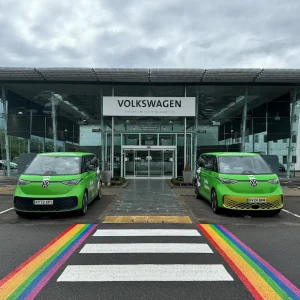Collision avoidance systems are the most beneficial advanced driver assistance systems (ADAS) available for company cars, according to UK businesses.
The latest research by leasing company Arval for its Mobility Observatory Barometer found that 38% of respondents named collision avoidance as useful, ahead of automatic emergency braking (37%), driver fatigue warning (35%), lane departure warning (34%), pedestrian detection (32%), adaptive cruise control (25%) and automatic parking system (14%).
Head of Arval’s Mobility Observatory in the UK Shaun Sadlier said: “ADAS systems are now becoming widespread on company cars and vans, being mentioned in more fleet policy documents as employers look to further increase their focus on driver safety and behaviours.
“They are also set to become even more prevalent following recent moves by the EU to make them a standard fitment on all new vehicles introduced onto the market from later this year.
“Fleet decision makers are increasingly familiar with this technology and probably beginning to get a good idea of which devices work well in real-world-conditions, so this question is a part of our research that is becoming increasingly interesting, we believe.”
Sadlier said that the top answers being very closely matched indicated a general positivity towards ADAS that was consistent across all types and sizes of fleet.
He continued: “Essentially, the top five or even six results are very closely matched and indicate a general across-the-board positivity towards ADAS that is consistent across all types and sizes of fleet.
“Of these devices, most are included in the EU mandate, with adaptive cruise control and pedestrian detection systems being the exceptions. These tend to be more expensive and only found on higher-end models.
“However, it’s interesting to see pedestrian avoidance systems named by many more respondents than in 2021’s report, up from 14% to 32%. This technology is seen on relatively few cars, but can be highly impressive, especially in night driving conditions where pedestrians may be harder to see.”





